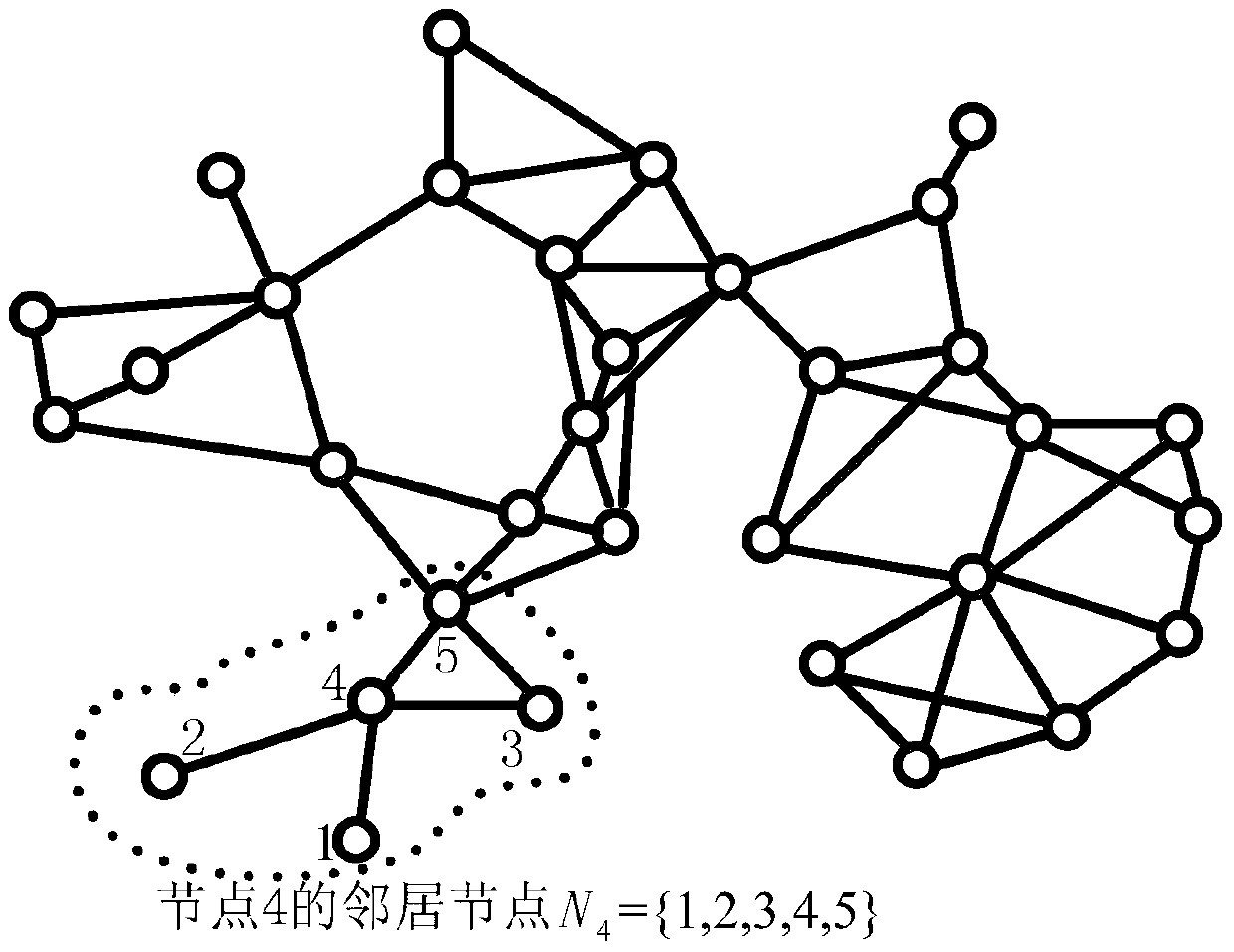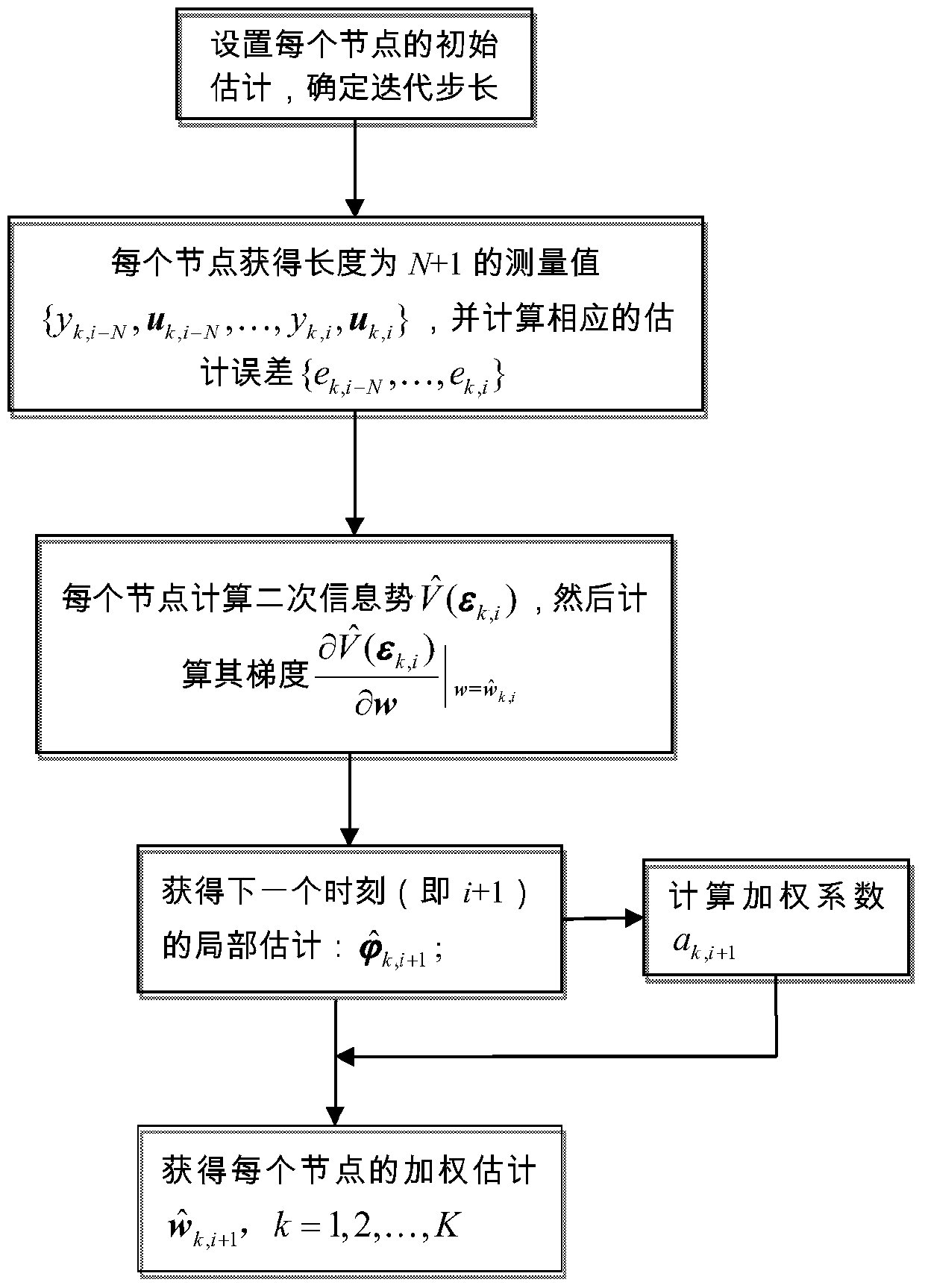Adaptive Estimation Method of Censored Data Parameters Based on Information Theoretic Learning
An adaptive estimation and information theory technology, applied to baseband system components and other directions, can solve problems such as satisfying Gaussian distribution, achieve good estimation accuracy, and reduce the impact of estimation performance
- Summary
- Abstract
- Description
- Claims
- Application Information
AI Technical Summary
Problems solved by technology
Method used
Image
Examples
Embodiment 1
[0082] Suppose a sensor network contains K=20 nodes, and the vector w to be estimated 0 is a normalized 5×1 vector (ie ||w 0 || 2 = 1). noise n k,i It is generalized Gaussian noise, that is, the probability density of the noise satisfies f(n)∝exp(-|v| p ), where p is the shape parameter, when 0k,i is super-Gaussian noise (in particular, p=1,n k,i is super Laplacian noise), when p=2, n k,i is Gaussian noise, when p>2, n k,i is sub-Gaussian noise. Define the signal-to-noise ratio as: In addition, the width parameter adopted by the Gaussian kernel function in this method is σ=2. In the following experiments, the present method is compared with MSE-based adaptive methods:
[0083] Experiment 1: In the case of SNR=5dB, calculate the relationship between the mean square estimation error and the iterative cycle i, the results are as attached image 3 It is shown and shown that no matter in super-Gaussian, Gaussian or sub-Gaussian noise environment, the method of the presen...
PUM
 Login to View More
Login to View More Abstract
Description
Claims
Application Information
 Login to View More
Login to View More - R&D
- Intellectual Property
- Life Sciences
- Materials
- Tech Scout
- Unparalleled Data Quality
- Higher Quality Content
- 60% Fewer Hallucinations
Browse by: Latest US Patents, China's latest patents, Technical Efficacy Thesaurus, Application Domain, Technology Topic, Popular Technical Reports.
© 2025 PatSnap. All rights reserved.Legal|Privacy policy|Modern Slavery Act Transparency Statement|Sitemap|About US| Contact US: help@patsnap.com



